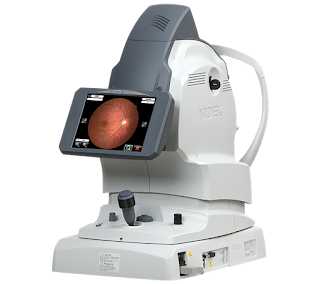Mobilizing Vision Care: Exploring the Benefits of DGH Portable Ultrasound
In the
realm of ophthalmology, diagnostic tools that are portable yet powerful hold
immense value, especially in settings where access to traditional imaging
equipment may be limited. The DGH portable ultrasound stands out as a versatile
device that offers eye care professionals the ability to conduct comprehensive
ocular assessments in diverse clinical environments. This article delves into
the significance of the DGH portable ultrasound, exploring its features,
benefits, and impact on modern vision care practices.
Understanding
the DGH Portable Ultrasound:
The DGH portable ultrasound is a compact
and lightweight imaging device designed to provide detailed imaging of ocular
structures, including the cornea, anterior chamber, lens, and posterior
segment. Unlike traditional ultrasound machines that are bulky and stationary,
this portable device offers flexibility and convenience without compromising
imaging quality or diagnostic accuracy.
Key
Features and Functionality:
At the
heart of the DGH portable ultrasound lies its advanced ultrasound technology, which
utilizes high-frequency sound waves to produce real-time images of the eye's
internal structures. The device is equipped with a range of transducers and
imaging modes, allowing clinicians to perform various ocular assessments, such
as pachymetry, biometry, and anterior and posterior segment imaging, with
precision and efficiency.

Empowering
Patient Care:
From the
patient's perspective, the introduction of the DGH portable ultrasound
represents a significant advancement in vision care accessibility and
convenience. Its non-invasive imaging procedures and quick scan times ensure a
comfortable and efficient experience during ocular evaluations. Furthermore, by
facilitating early detection and monitoring of ocular pathology, this
technology offers the promise of preserving vision and improving long-term
outcomes for patients, especially in underserved or remote communities.
Applications
Across Ophthalmic Specialties:
The
versatility of the DGH portable ultrasound extends across various ophthalmic
specialties, making it a valuable tool for comprehensive eye care. In corneal
imaging, for example, the device can assess corneal thickness and detect
abnormalities such as edema or dystrophy. In glaucoma management, it can
evaluate anterior chamber depth and angle structures, aiding in the diagnosis
and monitoring of disease progression.
Challenges
and Future Directions:
Despite its
numerous benefits, the integration of the DGH portable ultrasound into clinical
practice may pose certain challenges, including training requirements and cost
considerations. However, ongoing advancements in technology and increased
accessibility are poised to overcome these obstacles, paving the way for
broader adoption and utilization of this invaluable imaging tool in the years
to come.
Conclusion:
In
conclusion, the DGH portable ultrasound
represents a significant advancement in the field of ocular imaging and
diagnosis, offering eye care professionals the ability to conduct comprehensive
assessments with flexibility and convenience. With its compact design, advanced
ultrasound technology, and wide range of applications, this device empowers
clinicians to deliver personalized and effective patient care, even in
resource-limited settings.



Comments
Post a Comment